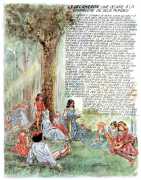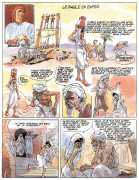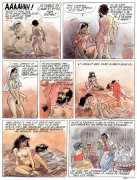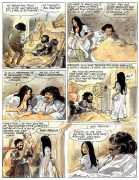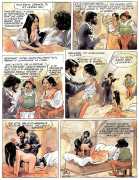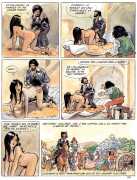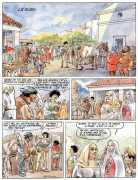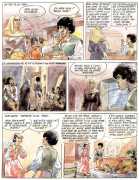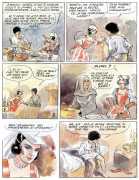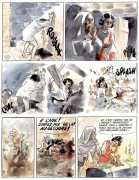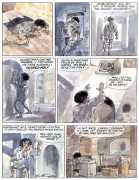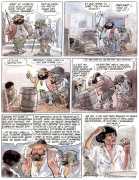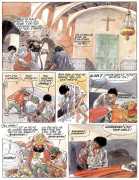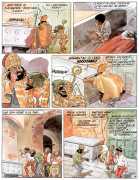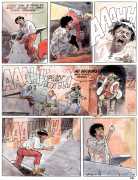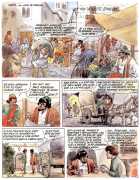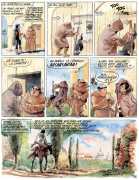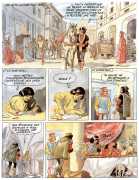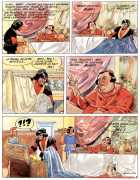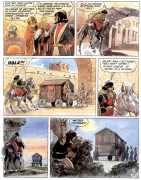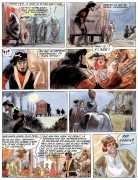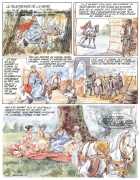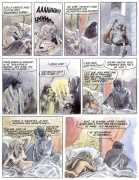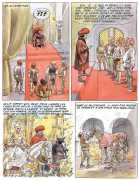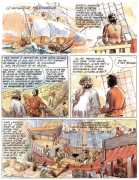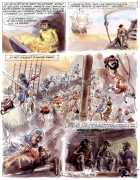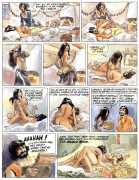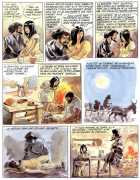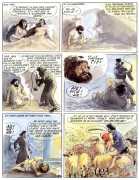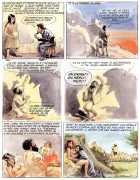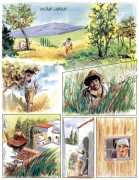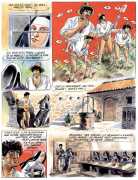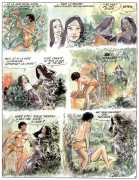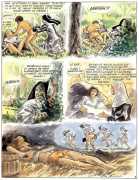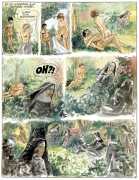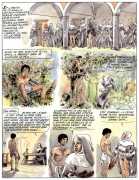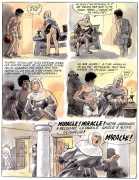 In his distinctive style, Dino Attanasio – with his son Alexandre who adapted the text – created a version of Boccaccio’s Decameron which conveys both the real-world down-to-earth settings of the tales with exactly the right amount of graphic wit. It is the only Attanasio comic strip which has a distinctly erotic flavour, leaving us wondering what he might have produced if he had chosen to explore the genre further.
In his distinctive style, Dino Attanasio – with his son Alexandre who adapted the text – created a version of Boccaccio’s Decameron which conveys both the real-world down-to-earth settings of the tales with exactly the right amount of graphic wit. It is the only Attanasio comic strip which has a distinctly erotic flavour, leaving us wondering what he might have produced if he had chosen to explore the genre further.
The Attanasios chose seven of the hundred stories of the Decameron to illustrate, including several of those with explicitly sexual themes. The stories included in the selection are Le diable en enfer (The Devil in Hell), La jument (The Mare), Le rubis (The Ruby), Une fois à toute, épreuve (Always Test First), Le palefrenier de la reine (The Queen’s Groom), Le navigateur malchanceux (The Unlucky Sailor), and Un dur labour (A Hard Job).
Here is the introduction to this selection from Boccaccio’s timeless tales:
The natural son of a Tuscan banker and a Frenchwoman, Giovanni Boccaccio (1313–75) spent his childhood in an environment where nothing predisposed him to the study of letters. His father groomed him for a commercial career, and it was in Naples that the young Boccaccio left to learn about business. To his greatest happiness, he took a liking to literature by frequenting the Angevin nobility and meeting Maria d’Aquino (the presumed daughter of Robert the Wise, Duke of Anjou and King of Naples), nicknamed Flammette (The Little Flame), who inspired him to write an elegy. Boccaccio wanted to become a poet honouring love and women.
Boccaccio was a friend of Petrarch, and also had great admiration for Dante. Mythological idylls and bucolic poems were among the literary genres that he liked the most, but it is the Decameron that will forever earn him a place in posterity.
Towards the end of his life Boccaccio wrote a few scholarly works, and devoted himself to the study of ancient languages. Disappointed by an unsuccessful affair that left him with deep scars, he wrote Il Corbaccio (The Poor Crow), a tirade against the fairer sex.
Boccaccio died in Certaldo, his father’s native village, in solitude, destitution and misunderstanding.
Le Décaméron was published by Claude Lefrancq Éditeur.


